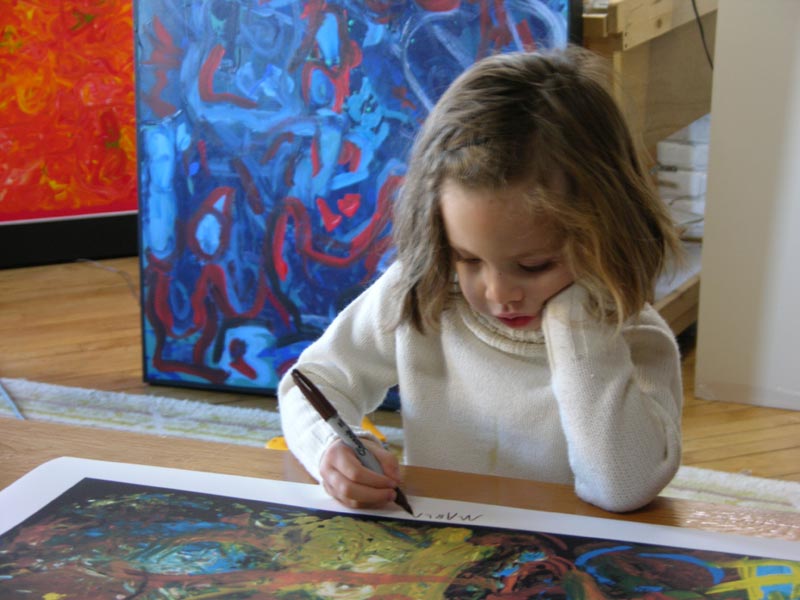Marla Olmstead: Jackson Pollock, Jr.?
May 29, 2011

Published: October 25, 2007
Marla Olmstead was a four-year-old girl who could sell a painting for $20,000, and then she turned five and the bubble burst. Hers is a complicated story that tested the definitions of abstract art and what it means to be an artist.
Amir Bar-Lev’s documentary, “My Kid Could Paint That,” released Oct. 5, shows the public’s relationship with Marla, first devoted, then doubt-riddled as the true nature of this young artist’s work came under fire. The New York Times ran an article about the girl, entitled “A Portrait of an Artist as a Young Girl.” She was likened to Picasso. The frenzy came to an end with a “60 Minutes” exposé in which the Olmsteads were shown as a fraudulent family. The rise and fall was so severe that their art dealer, who was previously considering running for mayor, was soon contemplating leaving town.
Heavy words like genius and prodigy were casually flung around. They were all in reference to a little girl that painted in a diaper on the kitchen table. The art world, notoriously snobbish and cold, fell in love with the princess and her paintbrush.
What Marla has helped to articulate is the malleability of the art world. Art, by its very nature, seeks a contemplative viewer, whereby an intentional artist gains an audience. Even Duchamp’s “Fountain” said something about his views on art. Marla does not ask a question on her own, rather the act of art making is what provokes. Was this an intentional effort or a preschooler merely pushing paint around a canvas nearly twice her size? Was she debunking the myth of abstract art or was she the daughter of two clever and knavish parents?
Bar-Lev shows a clip from the “60 Minutes” piece in which an expert in children’s art, who had initially called Marla a genius, immediately retracts his praise of the young artist upon seeing footage of Marla painting. The expert claims that she does nothing out of the ordinary for a child of her age. That’s when her parents come under fire.
Mr. Olmstead can be heard on the tape urging Marla in a stern voice where to paint. Bar-Lev then presents his own footage of Marla telling her father to paint on her canvas, and another instance in which she says that her little brother Zane was the sole painter of “the green painting.” During all these little moments, Mr. Olmstead becomes increasingly agitated or ignores what Marla is saying altogether.
Bar-Lev’s film articulates how Marla’s adorability has found a pressure point in the art market along with the exploitation on the part of Marla’s father and dealer. They are depicted as this male duo ready to climb to the top using this girl’s work to build their ladder. Marla’s mother seems helplessly caught between her daughter’s best interest and her husband’s desire to go on prime time TV.
In the end, nothing is certain. It seems the public, who have allowed themselves to pay thousands for finger paint on canvas, could not take what was aired on national television. They wanted to pretend that Marla created art in a vacuum and ignore potential parental motivations or interference. They wanted to live in a world where this tiny little person could create big paintings with big ideas.












